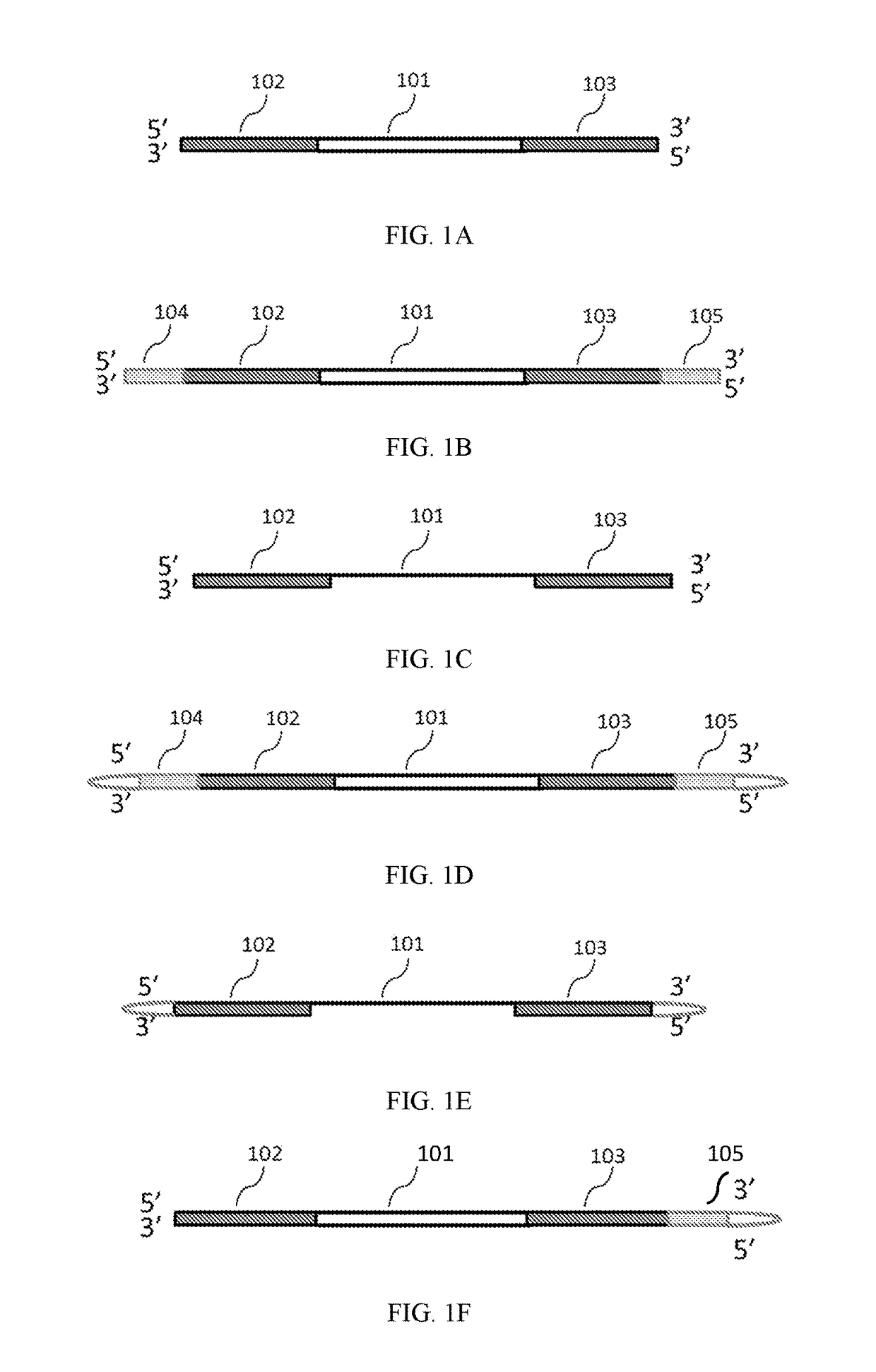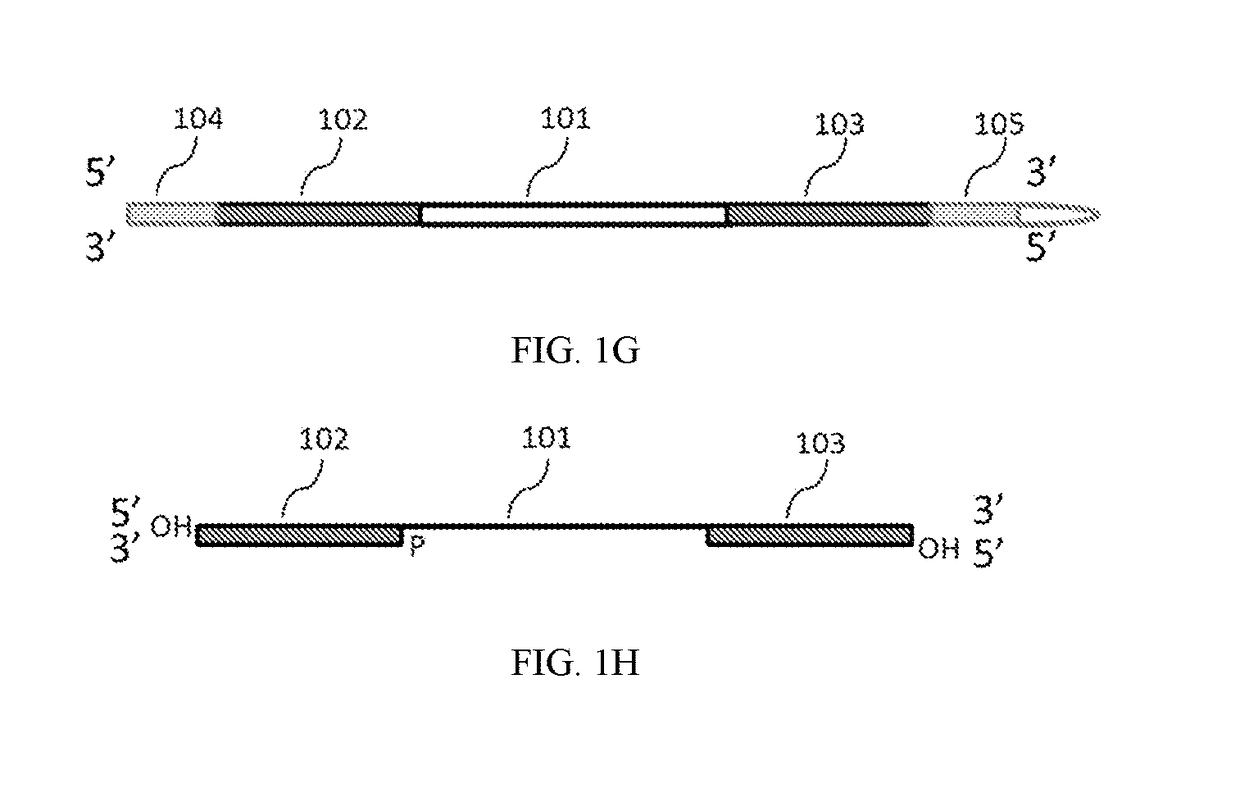Methods of inserting molecular barcodes
- Summary
- Abstract
- Description
- Claims
- Application Information
AI Technical Summary
Benefits of technology
Problems solved by technology
Method used
Image
Examples
example 1
ome Sequencing of Genomic DNA from a Human Individual to Use as a Reference Genome
[0180]An exemplary method of preparing a sequencing library for whole genome sequencing of a genomic DNA sample from a human individual is described below.
[0181]Human gDNA is extracted from a buccal swap or a drop of blood, and the purity and yield of the gDNA is measured. A composition comprising a plurality of synthetic transposons each having two 19-bp Tn5 recognition sites flanking a molecular barcode comprising 20 randomly designed nucleotides (N), fixed bases, and other degenerately designed bases as shown in FIG. 2A is prepared. Duplicate samples of the gDNA inserted with the plurality of synthetic transposons are prepared. In each sample, about 0.3 ng gDNA is used to contact with the composition comprising the plurality of synthetic transposons under a condition that allows insertion at a frequency of about 150-bp between adjacent transposition sites. The 9 nt single-stranded gaps are filled-in...
example 2
Capture for Copy Number Change in Tumor Cells
[0182]An exemplary method of detecting copy number variations in tumor cells is described below.
[0183]Human gDNA samples are extracted from both tumor tissues and surrounding normal tissues for comparison. The purity and yield of the samples are measured. Typically, gDNA in the range of ng (e.g., for normal or tumor tissues) to μg (e.g., for tumor tissues usually) is used per experiment. A high amount of tumor tissues is useful for identifying rare and secondary changes, albeit yielding more sequence reads. A composition comprising a plurality of synthetic transposons each having two 19-bp Tn5 recognition sites flanking a molecular barcode comprising 20 randomly designed nucleotides (N), fixed bases, and other degenerately designed bases as shown in FIG. 2A is prepared. Duplicate samples of the gDNA inserted with the plurality of synthetic transposons are prepared. In each sample, gDNA (for example, about 3 ng) is used to contact with the...
PUM
| Property | Measurement | Unit |
|---|---|---|
| Frequency | aaaaa | aaaaa |
Abstract
Description
Claims
Application Information
 Login to View More
Login to View More - R&D
- Intellectual Property
- Life Sciences
- Materials
- Tech Scout
- Unparalleled Data Quality
- Higher Quality Content
- 60% Fewer Hallucinations
Browse by: Latest US Patents, China's latest patents, Technical Efficacy Thesaurus, Application Domain, Technology Topic, Popular Technical Reports.
© 2025 PatSnap. All rights reserved.Legal|Privacy policy|Modern Slavery Act Transparency Statement|Sitemap|About US| Contact US: help@patsnap.com



